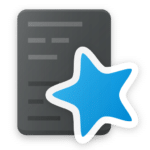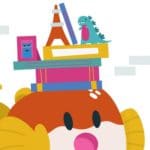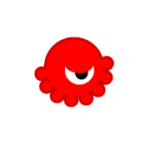
The Beginner’s Guide to Learning Japanese Reading: From Kana to Novels
Reading is an extremely important part of learning a new language.
And when a particular language’s writing system is completely different from one’s native language, finding great resources for reading is a necessity.
Luckily, there are a ton of resources out there dedicated to teaching students all about how to learn Japanese reading.
On top of the list of killer Japanese reading resources we’ve put together, we also found nine fantastic novels in Japanese for all levels of learners.
Learning the basics of Japanese characters and syllabaries is important, but maintaining fluency is also very important. And there’s no better way to stay sharp than by reading Japanese books.
First, let’s take a look at some awesome learning resources to learn Japanese reading. Then, we’ll dive into a few excellent books for learners to sharpen their new reading skills on.
Download: This blog post is available as a convenient and portable PDF that you can take anywhere. Click here to get a copy. (Download)
Learn Japanese Reading with 19 Resources and Books
10 Resources for Learning to Read Japanese Kana and Kanji
These resources are perfect for any level of reader.
If you’re an absolute newbie, start at the beginning of the list, where you’ll learn the basics of reading the Japnese writing system.
If you’re already familiar with kana, then head down to the middle of the resources, where you’ll learn some really useful kanji.
The final few resources are worth checking out at any level since they introduce excellent reference material and some resources intended to continue your studies, no matter where you are in your Japanese learning journey.
“Learn ALL Hiragana in 1 Hour—How to Write and Read Japanese” (Video)
Memorizing hiragana is a rough time for newbies. They all honestly look identical at first, so differentiating between all 46 different characters may seem impossible.
It doesn’t have to be this way! One great way to memorize hiragana is by watching this hour-long video from JapanesePod101. Not only is this resource free to watch, but it’s also one of the best ways to learn hiragana online.
The video goes through each and every hiragana character and associates each one with a memorable image to help learners remember them better. For example, ぬ (nu) looks like a pile of noodles (NU-dles) and き (ki) looks like a “key.”
It’s honestly brilliant when you think about it. By associating each character with an image, suddenly all of the different hiragana characters don’t look the same to the non-native speaker. Japanese mnemonics are pretty neat, aren’t they?
“Learn ALL Katakana in 1 Hour—How to Write and Read Japanese” (Video)
This video from JapanesePod101 is just like our previous entry on hiragana, only it focuses on getting learners to memorize all 46 basic katakana characters. It uses the same concept of mnemonics to help learners associate each character with a particular image.
We recommend watching the hiragana video first, getting a solid grip on all the hiragana and then giving this video a shot. It’s also a good idea to use these videos in conjunction with the Anki deck we’ve listed below.
And by the way, if you enjoy using these two videos to learn Japanese reading, then you might like JapanesePod101’s other content, which includes video and audio resources, full lesson and grammar notes, transcripts of every lesson and more.
Anki Katakana and Hiragana Deck with Audio and Stroke Order (App/Flashcards)
Anki flashcards are very popular Japanese reading tools among self-learners. The days of handwriting flashcards and accumulating massive physical decks is over!
Anki is a simple program that’s basically a digital flashcard deck. You can download tons of different Japanese flashcard decks that cover kanji, hiragana, katakana and whole phrases.
You can also, of course, make your own flashcards. But there are so many excellent decks already available out there from other users, you never need to if you don’t want to!
The deck we’ve linked is perfect for any level of learner who’s trying to perfect their character reading skills. It boasts all hiragana and katakana, along with audio samples and stroke order.
Anki is available for download on Windows, Mac and Linux devices. It’s also available in app form for Android and iOS devices. The program is 100% free to use and the library of different Japanese flashcards is free to download as well.
FluentU (Program and App)
It naturally and gradually eases you into learning Japanese language and culture. You’ll learn real Japanese as it’s spoken in real life.
Just take a look at the wide variety of authentic video content available in the program. Here’s a small sample:

You’ll discover tons of new Japanese vocabulary through these great clips.
Don’t worry about your skill level being an issue when it comes to understanding the language. FluentU makes native Japanese videos approachable through interactive transcripts.

Tap on any word to look it up instantly.
You’ll see definitions, in-context usage examples and helpful illustrations. Simply tap “add” to send interesting vocabulary words to your personal vocab list for later review.

FluentU even uses a learning program which adapts to your specific needs to turn every video into a language learning lesson and get you to actively practice your newly-learned language skills.

Start using the FluentU website on your computer or tablet or, better yet, download the FluentU app from the iTunes or Google Play store. Click here to take advantage of our current sale! (Expires at the end of this month.)
100 of the Most Common Kanji Characters (Guide)
Hiragana and katakana are syllabaries, meaning that each symbol represents a specific syllable in Japanese. Kanji, on the other hand, is the old school way of writing out Japanese words with symbols that stand for the entire word.
Kanji are derived from Chinese characters, so you can bet there are a lot of them—around 2,136 commonly used characters to be precise.
You definitely don’t need to learn every single kanji as a beginner, but it’s very important to learn at least a handful of basic characters. This handy guide from ThoughtCo. breaks down 100 of the most important kanji. Most of these characters involve numbers, actions and common nouns and will create a great basis on which to build more kanji knowledge.
Please note that this page doesn’t give you the readings of the kanji, only the meanings. To learn how to pronounce the individual kanji, you can look them up in any dictionary or just discover them in context, paired with other kanji and kana to form words.
You can also read more about kanji pronunciation in an excellent article from Tofugu, which breaks down the different ways to read kanji, why there are multiple readings and how to know which one to use.
WaniKani (Program)
“2,000 kanji. 6,000 vocabulary words. In just over a year.”
That’s WaniKani’s mission statement and they sure seem to live up to it.
The WaniKani method, brought to you by Tofugu, focuses on teaching beginner and intermediate learners Japanese reading through mnemonics, radicals, vocabulary and a spaced repetition system.
The program itself is very game-based, encouraging its users to beat “levels” and unlock different Japanese characters. It also features a forum for learners to interact with each other and ask questions.
WaniKani is great for other aspects of Japanese, such as grammar and comprehension, but is most ideal for learning how to read in Japanese.
It’s free to use until you reach level four. Their premium membership is listed at $9 per month or $299 for a lifetime membership.
Japanese Dictionary Takoboto (Website and App)
Every Japanese learner needs a dependable Japanese-English dictionary. Why carry around a clunky book when you can download a free app?
Takoboto is an extremely popular online Japanese dictionary app. It works offline and includes several different native languages, such as English, French, German, Russian and more.
Each word can be searched via romaji or in your native langauage and includes examples sentences, kanji details, conjugated forms and audio pronunciation. You can even build a flashcard deck and generate study lists, as well.
It’s just an all-around good dictionary to have on hand for study or when traveling abroad in Japan.
Japanese Dictionary Takoboto is available for Android and Microsoft devices or you can use it directly from your browser.
Rikaikun (Browser Extension)
If you’re a regular Chrome user, there are a ton of great Japanese extensions you can add to your browser for free. One handy extension many Japanese learners swear by is Rikaikun.
Rikaikun is a live translator that gives you definitions on any website on the fly. If you’re looking at a page in Japanese and see a word you don’t know, there’s no longer a need to copy and paste that word into Google Translate.
With Rikaikun, you can simply roll your cursor over the word and a dictionary entry will pop up that includes the kanji, hiragana, katakana (if applicable) and any and all translations of the word into English. You’ll also get to see the kanji radicals for the word and similar characters.
“Genki” (Textbook/Workbook)
This is it, guys. The Japanese textbook to end all Japanese textbooks. This is what you’d more than likely be using in a formal Japanese classroom and solo Japanese learners online will always recommend this book.
“Genki I” and its accompanying workbook break down Japanese grammar concepts and phrases into easy-to-digest chapters. You can pretty much learn basic Japanese by reading this textbook front to back and by using the workbook when prompted by the textbook. Its sequel book, “Genki II,” picks up right where “Genki I” drops off.
The textbook and workbook together don’t cost over $100 in most places, so it’s a pretty inexpensive reading resource, as well. The textbook usually comes with an audio CD to further help you with your listening abilities as well. Make sure to double-check the listing for the CD so you know you’ll be getting it.
Learn Japanese Reading with 9 Incredible Japanese Novels
You’ve memorized the Japanese kana and you have some kanji in your reading toolkit. Your favorite dictionary app is at hand and you’re making your way through “Genki.”
What’s next?
You read, of course!
We’ve put together a list of nine books perfect for learning Japanese with reading at various levels.
To make finding the right Japanese novel for you much easier, we’ve ranked them by difficulty. This means that the first few books listed are simple and brief enough for beginners and the last books on the list are more complex and suited for advanced learners.
If you’re not sure where you are on the scale, simply select a book and click “Look Inside” near the cover to view a preview of the novel wherever it’s available. Ideally, you’ll want to find a book that’s not too hard but not too easy, either.
Check out these awesome books!
“nekomaki1” by ms-work
This cute little novel is the first in the “nekomaki” series. It’s great for beginner learners because it features mostly hiragana characters and a few of the most popular kanji characters.
While “nekomaki” looks like a children’s book, it’s definitely more of an adult comic series complete with funny illustrations and easy-to-read dialogue.
“Goodnight, Panda!” by Babl Books
“Goodnight, Panda!” is a children’s book with simple hiragana and katakana that’s readable for Japanese children and newbie Japanese learners alike.
This cute little book follows the life of Panda, who lives in a zoo. He doesn’t want to go to bed, so he hides among other black and white zoo animals to avoid bedtime.
“Goodnight, Panda!” uses parallel text that features both English and Japanese, making it the perfect book for new learners to try.
“I Am a Cat” by Sōseki Natsume
Yep, another Japanese cat novel. You can never go wrong with cats! “I Am a Cat” is the story of a housecat that lives in the Meiji period of Japan. It’s quite a humorous take on how humans live their lives and what our pets may think of us.
This novel is a classic in Japan. It was written in 1905 but still manages to be satirically relevant today. We’d recommend this book to beginners and perhaps intermediate learners who want to do some light reading.
“Kokoro” by Sōseki Natsume
A small book typically read by high school students, “Kokoro” is a 1914 novel about a young man and his teacher during the transition of the Meiji era to the modern era. The book’s themes explore guilt, egotism, identity and family values.
The language starts to get more difficult here, as Sōseki was known for his beautiful and lyrical writing.
There’s no “Look Inside” option for this book but you can find a really useful breakdown of the book’s first few sections over on the Sōseki Project. Hover over any underlined word to see its definition or press play to hear an audio recording of the reading.
The study guide for each section breaks it down even more into key vocabulary words and a rough translation. It’s an excellent resource for learners!
“Spirited Away” by Hayao Miyazaki
If you’ve seen the Studio Ghibli film “Spirited Away” then you’ll love this written adaptation of the film!
In the story, a young girl named Chihiro has to move to a new home. But on the car ride there, her parents are swooped away by spirits and turned into pigs. Chihiro must find a way to save her parents from being eaten while working at the famous spirit bathhouse in the center of town.
“Spirited Away” is a pictorial comic-style novel with pretty complex kanji and hiragana, though all kanji have furigana captions for beginners and intermediate learners.
“Ukurou Syurowatarinomaki Ehon” by Matsuzaki Naotoshi
In this charming little book, we meet Koukiro, a rabbit-owl spirit who has fun at night when everyone else is asleep. It’s a bit spooky, but mostly it’s whimsical and adorable.
This is a great book for Japanese learners to practice their kana and pronunciation. Most of the dialogue is in either hiragana or katakana and each page is brief, so all levels of learners may be able to handle this one. Absolute newbies may find it to be just a little too challenging.
“Harry Potter and the Sorcerer’s Stone” by J.K. Rowling
This is simply the Japanese adaptation of the first book in the famous “Harry Potter” series.
Even though it’s technically a children’s book, the kanji and kana used are too difficult for most beginners, making it a great choice for intermediate learners.
“Kitchen” by Banana Yoshimoto
“Kitchen” tells the tales of two mothers and explores the themes of love and tragedy. It does so by looking at the power of the home’s kitchen when it comes to family and growth.
If you want to read something that explains grief and loss beautifully, check out this great intermediate-level book.
“Norwegian Wood” by Haruki Murakami
Forewarning: This is a rough read that’s definitely only for adults. Even then, some adults may not be able to handle how intense and sad this book is. However, this is an incredibly beautiful book and a classic in Japan.
In “Norwegian Wood,” a young man must choose between the love of his youth, who’s the troubled and grief-stricken girlfriend of his deceased best friend and another woman who’s basically her polar opposite.
It’s an incredible look into what life was like in 1960s Japan and explores themes of sexual awakening, death, trauma, love and youth.
This novel is very dense and contains a lot of difficult kanji, so advanced learners may benefit the most from reading.
We hope you enjoy learning Japanese reading through these wonderful resources and novels! We bet at least one of these reads will become a new favorite for your bookshelf.
Have fun reading and don’t forget to study hard!
Download: This blog post is available as a convenient and portable PDF that you can take anywhere. Click here to get a copy. (Download)
Em Casalena is a published author, freelance writer and music columnist. They write about a lot of stuff, from music to films to language.










![Wagahai Wa Neko de Aru [I Am a Cat] (Japanese Edition) Wagahai Wa Neko de Aru [I Am a Cat] (Japanese Edition)](https://m.media-amazon.com/images/I/61YVXP53KSL.jpg)







